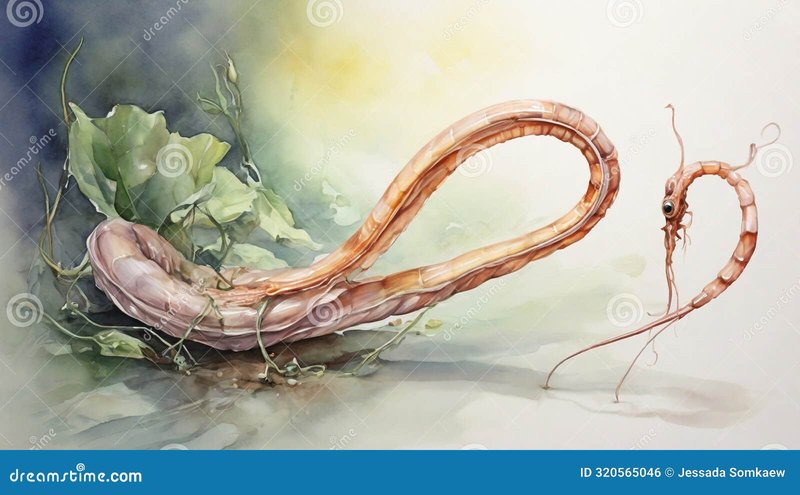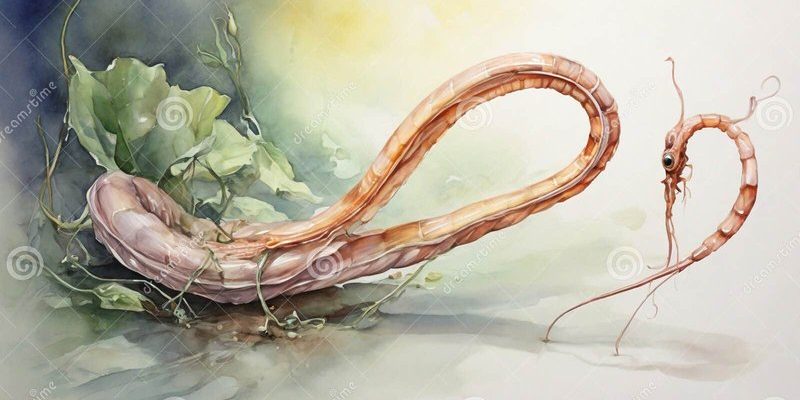
Ribbon worms, belonging to the phylum Nemertea, are fascinating critters often found in marine environments. They vary in size and color, from a few inches long to several feet! If you think about ribbon worms as the ninja hunters of the ocean, their proboscis serves as both a weapon and a tool for survival. Let’s dive deeper into how these incredible worms use their proboscis to snag their next meal.
What Is a Proboscis?
The term “proboscis” might sound fancy, but it’s really just another way of saying “long, tube-like mouthpart.” In ribbon worms, the proboscis is a highly flexible and extendable appendage that can shoot out with impressive speed. Imagine a garden hose—when you turn on the water, it shoots out fast and far. Ribbon worms use their proboscis similarly to capture prey quickly.
Anatomically, the proboscis is housed within a cavity in the worm’s body. When the ribbon worm spots a meal, it rapidly extends this organ, sometimes even across several times its body length. This ability helps ribbon worms ambush their food, whether it’s small fish, crustaceans, or even other worms!
You might be wondering, why does a ribbon worm need such a specialized tool? Well, living in the ocean means dealing with a lot of competition. The proboscis gives them that edge they need to thrive.
How Does the Proboscis Work? A Closer Look
The proboscis isn’t just a long tube; it’s a complex structure designed for efficiency. At the tip, it often has a sticky, sometimes venomous coating. When the worm extends its proboscis, it can wrap around its prey and immobilize it. Here’s how it all goes down:
1. **Sensing the Environment**: Ribbon worms use their sensory organs to detect movement and chemical signals in the water. When they sense something tasty nearby, they spring into action.
2. **Extension**: The worm contracts its body and forces the proboscis out. This motion is similar to how a telescoping antenna pops out—quick and precise.
3. **Capturing Prey**: Once extended, the proboscis sticks to the prey, sometimes injecting venom to subdue it. This venom can paralyze smaller creatures, making it easier for the ribbon worm to reel them in.
This hunting method is not only effective but also minimizes energy expenditure. Instead of chasing down prey, ribbon worms can lie in wait, relying on their quick reflexes and specialized tools.
Types of Prey Ribbon Worms Capture
Ribbon worms are opportunistic feeders, which means they will eat whatever they can catch. Their diet mainly includes:
- Small Fish: Ribbon worms can ambush and capture unsuspecting fish swimming too close to their hiding spots.
- Crustaceans: Tiny crabs and shrimp are on the menu, not just because they’re easy to catch, but also because they provide essential nutrients.
- Other Worms: Ribbon worms aren’t shy about going after other invertebrates, including their own kind!
You might be thinking, how do these worms know what to catch? Their keen senses help them identify potential meals based on size and movement. In a bustling underwater environment, this adaptability is crucial for survival.
Venom and Defense Mechanisms
Besides capturing prey, the venom on a ribbon worm’s proboscis serves another purpose: defense. Just like some snakes use venom to ward off predators, ribbon worms can deter larger fish or other threats with their toxic substances.
The venom varies among species. Some worms have highly potent venom that can quickly immobilize their prey. This effectiveness ensures that the ribbon worm can eat without facing immediate danger from larger animals that might have an eye on it.
Additionally, the ability to retreat quickly after an ambush is vital. When a ribbon worm detects danger, it can retract its proboscis and hide back into the sand or crevices, escaping before a predator has time to react.
Habitat and Distribution of Ribbon Worms
Ribbon worms are predominantly marine creatures, found in various environments, from sandy ocean floors to rocky coastal areas. They thrive in both shallow and deep waters, which means you can find them almost anywhere in the ocean.
Here are a few common habitats where ribbon worms reside:
- Coastal Shallows: This is where many ribbon worms come out to hunt, often in tide pools or muddy flats.
- Coral Reefs: The complex structures of reefs provide plenty of hiding spots and food sources for these worms.
- Deep Sea: Some species can be found lurking on the ocean floor at great depths, taking advantage of the less competitive environment.
Understanding where ribbon worms live can help us appreciate their role in the ecosystem. They contribute to the marine food web, acting as both predator and prey.
Challenges and Conservation
Although ribbon worms might seem like they have it made in the ocean, they face threats from various factors, including pollution and habitat destruction. As human activities continue to impact the oceans, the delicate balance within marine ecosystems is at risk.
Here’s what’s challenging for ribbon worms:
1. **Pollution**: Chemicals from land runoff can contaminate their environments and disrupt their life cycles.
2. **Habitat Loss**: Coastal development can destroy the habitats ribbon worms rely on, reducing their populations.
3. **Climate Change**: As ocean temperatures rise and acidity levels change, the dynamics of marine life are affected, including those of ribbon worms.
Protecting these creatures isn’t just about saving them; it’s about maintaining the health of the entire ocean.
So, there you have it—the ribbon worm and its incredible proboscis! These fascinating creatures remind us how diverse and unique life in the ocean can be. With their unique hunting strategy, they make a significant contribution to the marine ecosystem.
As you dive into the world of marine life, remember that even the tiniest organisms play a vital role in maintaining the balance of nature. Next time you think about predators, don’t forget about the ribbon worm and the incredible adaptations that help it survive and thrive in the ocean depths. Keep exploring and learning more about the wonders of our aquatic friends!

